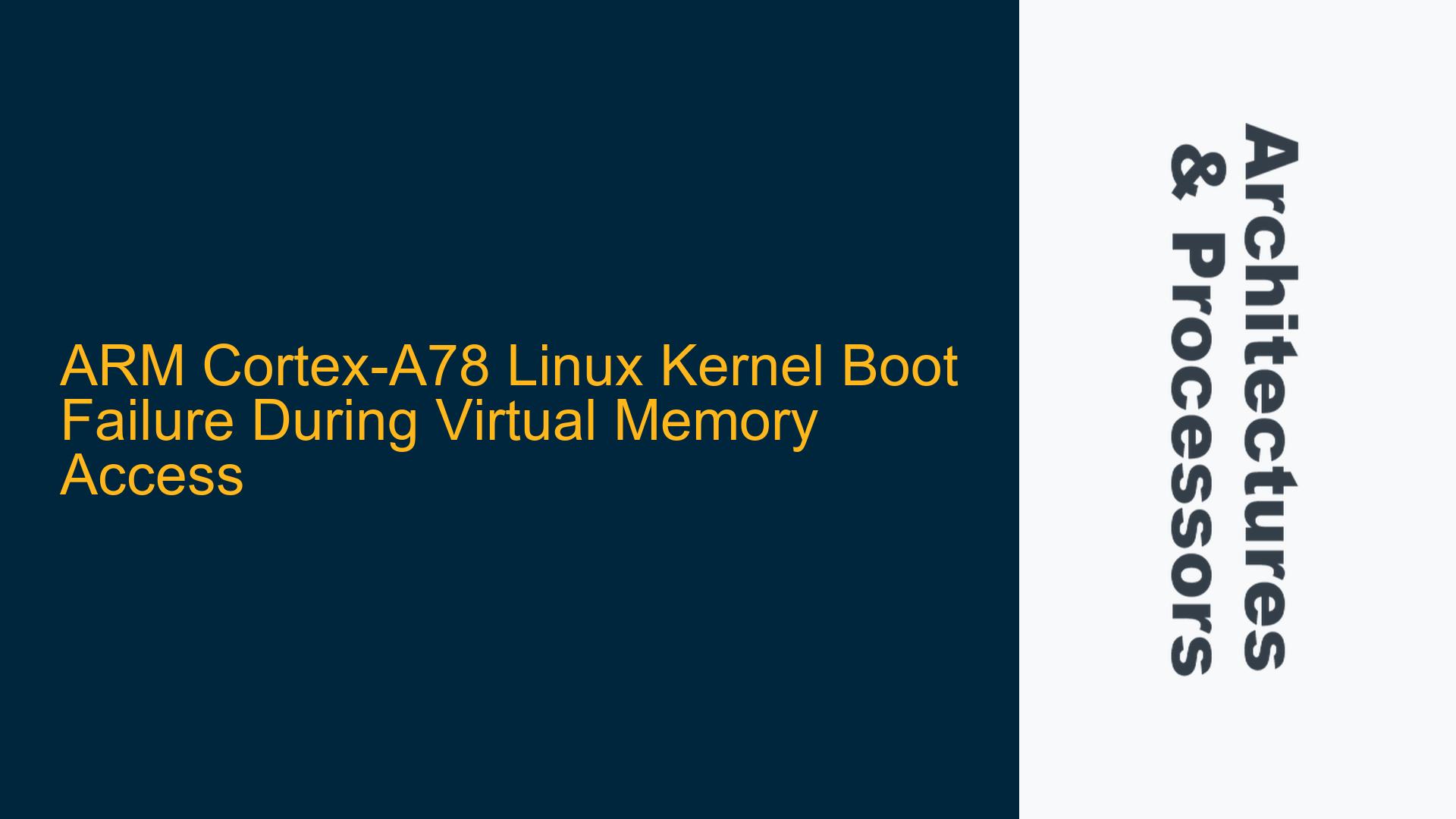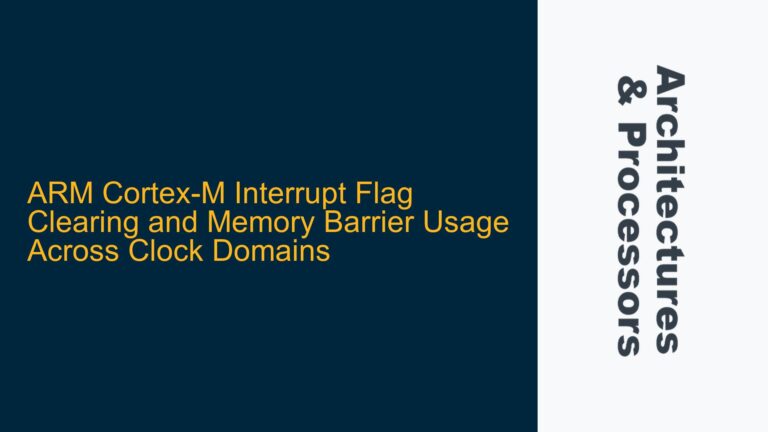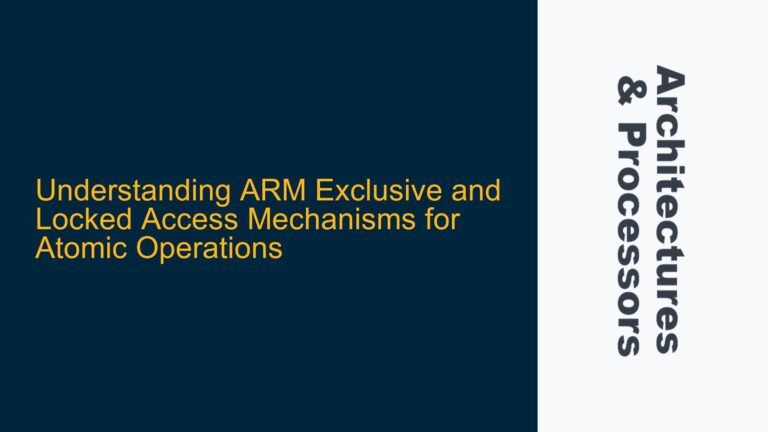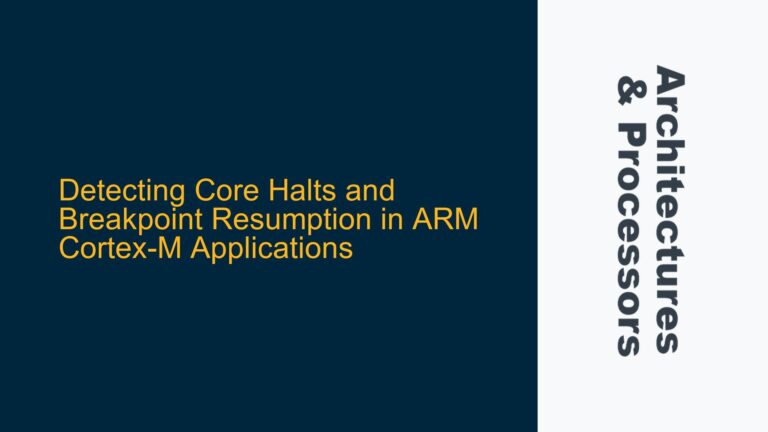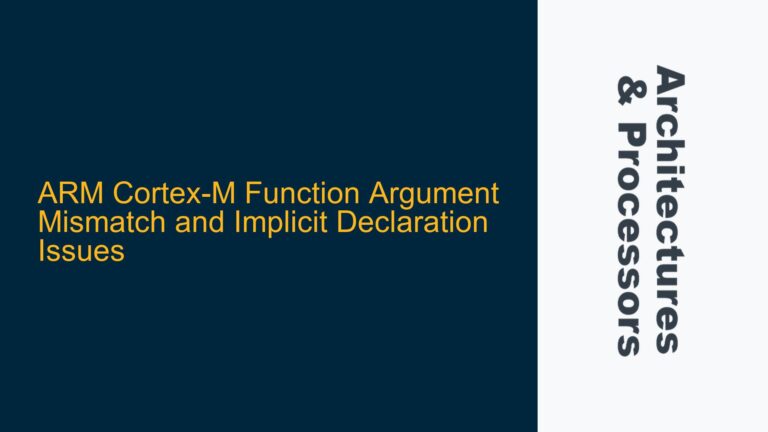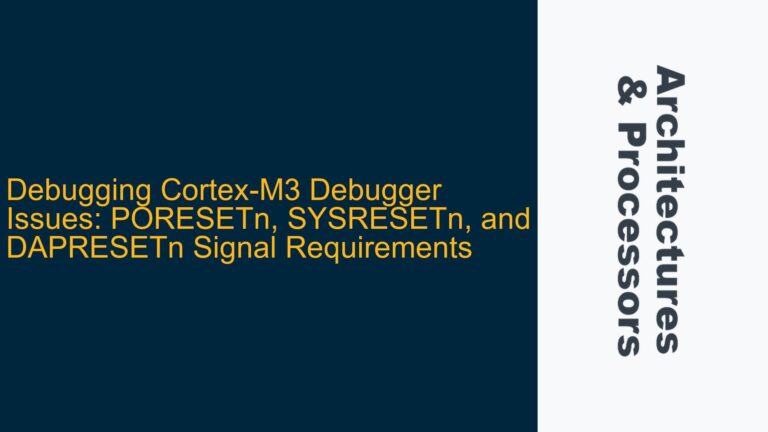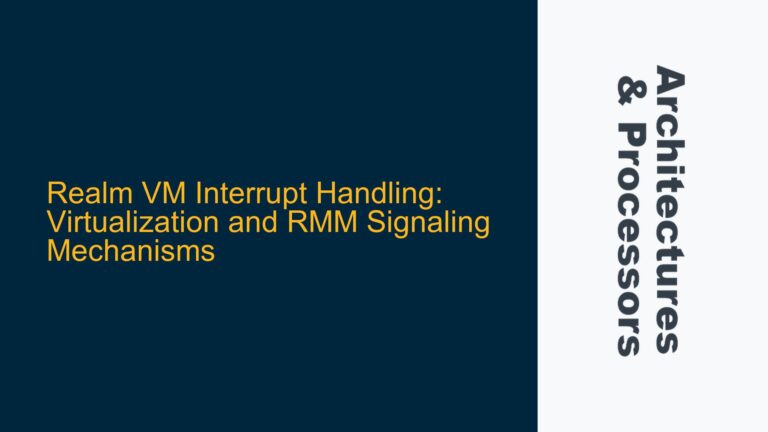ARM Cortex-A78 Virtual Memory Access Exception During Kernel Boot
The issue at hand involves a failure during the boot process of a Linux kernel (version 5.10.39) on an ARM Cortex-A78 core. The failure occurs specifically when the kernel attempts to access virtual memory during the execution of the set_task_stack_end_magic() function. This function is part of the kernel’s initialization process and is responsible for setting a magic number at the end of the task stack to detect stack overflows. The failure manifests as a curr_el_spx_sync exception, which is a synchronous exception occurring at the current exception level (EL). This exception is typically triggered by an instruction fetch or data access abort, indicating a problem with memory access.
The Cortex-A78 core is operating in EL2 when the exception occurs, which is a valid exception level for booting Linux, especially if virtualization features are intended to be used. However, the fact that the exception is triggered during a virtual memory access suggests that there may be an issue with the Memory Management Unit (MMU) configuration, page tables, or the translation of virtual addresses to physical addresses. The problem is further complicated by the fact that the kernel was compiled with the "relocatable kernel = NO" option, which means the kernel expects to be loaded at a specific physical address and does not support being relocated to a different address during boot.
The memory map provided indicates that the kernel image is placed at a high memory address (0x974409000000), which is consistent with the 39-bit virtual address space (VA_BITS) configuration. However, the use of such high addresses, combined with the non-relocatable kernel, could be contributing to the issue. Additionally, the fact that the U-Boot bootloader is configured to run from a high memory address (0x974400000000) suggests that the system’s memory layout is non-trivial and may require careful handling of memory zones and address translation.
MMU Misconfiguration and Exception Level Handling
The root cause of the curr_el_spx_sync exception is likely related to one or more of the following factors: MMU misconfiguration, incorrect exception level handling, or issues with the kernel’s memory management setup. The MMU is responsible for translating virtual addresses to physical addresses, and any misconfiguration in the page tables or translation tables can lead to access violations. In this case, the exception occurs when the kernel attempts to write to a virtual address, indicating that the MMU may not be correctly translating the virtual address to a valid physical address.
The Cortex-A78 core starts in EL3 after reset, and the boot code does not change this exception level. However, U-Boot is responsible for dropping the exception level to EL2 before handing control to the Linux kernel. While Linux can run at EL2, it is more common to run it at EL1, especially if virtualization features are not required. Running the kernel at EL2 introduces additional complexity, as the Hypervisor Configuration Register (HCR_EL2) and other EL2-specific configurations must be correctly set up to ensure proper memory management and exception handling.
Another potential cause of the issue is the kernel’s use of a non-relocatable image. When the kernel is compiled with "relocatable kernel = NO," it expects to be loaded at a specific physical address and does not support being relocated to a different address during boot. If the kernel is loaded at an incorrect address or if the memory map does not match the kernel’s expectations, this can lead to memory access issues. In this case, the kernel image is placed at a high memory address (0x974409000000), which may not align with the kernel’s expected load address, leading to the observed exception.
Additionally, the configuration of the U-Boot bootloader may be contributing to the issue. U-Boot is responsible for setting up the initial memory map, loading the kernel image, and passing control to the kernel. If U-Boot is not correctly configured to handle the high memory addresses used in this system, it may fail to properly set up the MMU or pass the correct memory information to the kernel. This could result in the kernel attempting to access invalid or incorrectly mapped memory addresses, triggering the curr_el_spx_sync exception.
Diagnosing and Resolving MMU and Exception Level Issues
To diagnose and resolve the issue, the following steps should be taken:
-
Check the Exception Syndrome Register (ESR_ELx): The ESR_ELx register contains information about the cause of the exception. By examining the value of this register, it is possible to determine the specific reason for the
curr_el_spx_syncexception. The ESR_ELx register provides details such as the exception class, instruction-specific syndrome, and faulting address. This information can be used to pinpoint the exact cause of the memory access failure. -
Verify MMU Configuration and Page Tables: The MMU configuration and page tables should be carefully reviewed to ensure that they are correctly set up. This includes verifying that the translation tables are correctly populated and that the virtual-to-physical address mappings are accurate. The page tables should be checked for any inconsistencies or errors that could lead to incorrect address translation. Additionally, the memory attributes (e.g., cacheability, shareability) should be verified to ensure that they are correctly configured for the memory regions being accessed.
-
Review Exception Level Handling: The exception level handling should be reviewed to ensure that the Cortex-A78 core is correctly transitioning from EL3 to EL2 before handing control to the Linux kernel. The Hypervisor Configuration Register (HCR_EL2) and other EL2-specific configurations should be checked to ensure that they are correctly set up for running the kernel at EL2. If virtualization features are not required, consider dropping to EL1 before entering the kernel to simplify the memory management and exception handling.
-
Recompile the Kernel as Relocatable: If possible, recompile the kernel with the "relocatable kernel = YES" option. This will allow the kernel to be loaded at any physical address and adjust its internal address references accordingly. This can help avoid issues related to the kernel being loaded at an incorrect or unexpected address. If recompiling the kernel is not an option, ensure that the kernel is loaded at the exact physical address it expects, as specified in the kernel’s configuration.
-
Verify U-Boot Configuration: The U-Boot configuration should be reviewed to ensure that it is correctly handling the high memory addresses used in this system. This includes verifying that U-Boot is correctly setting up the initial memory map, loading the kernel image at the correct address, and passing the correct memory information to the kernel. Any discrepancies in the U-Boot configuration should be corrected to ensure proper memory management during the boot process.
-
Debugging with a Memory Map: Create a detailed memory map of the system, including the locations of the bootcode, U-Boot image, kernel image, and device tree. Use this memory map to verify that all components are loaded at the correct addresses and that there are no overlaps or conflicts. This can help identify any issues related to memory layout or address translation.
-
Use Debugging Tools: Utilize debugging tools such as JTAG or a hardware debugger to step through the boot process and inspect the state of the CPU registers, MMU configuration, and memory contents. This can provide valuable insights into the state of the system at the point of failure and help identify any misconfigurations or errors.
By following these steps, it should be possible to diagnose and resolve the issue causing the curr_el_spx_sync exception during the Linux kernel boot process on the ARM Cortex-A78 core. Careful attention to the MMU configuration, exception level handling, and memory layout will be key to ensuring a successful boot.
